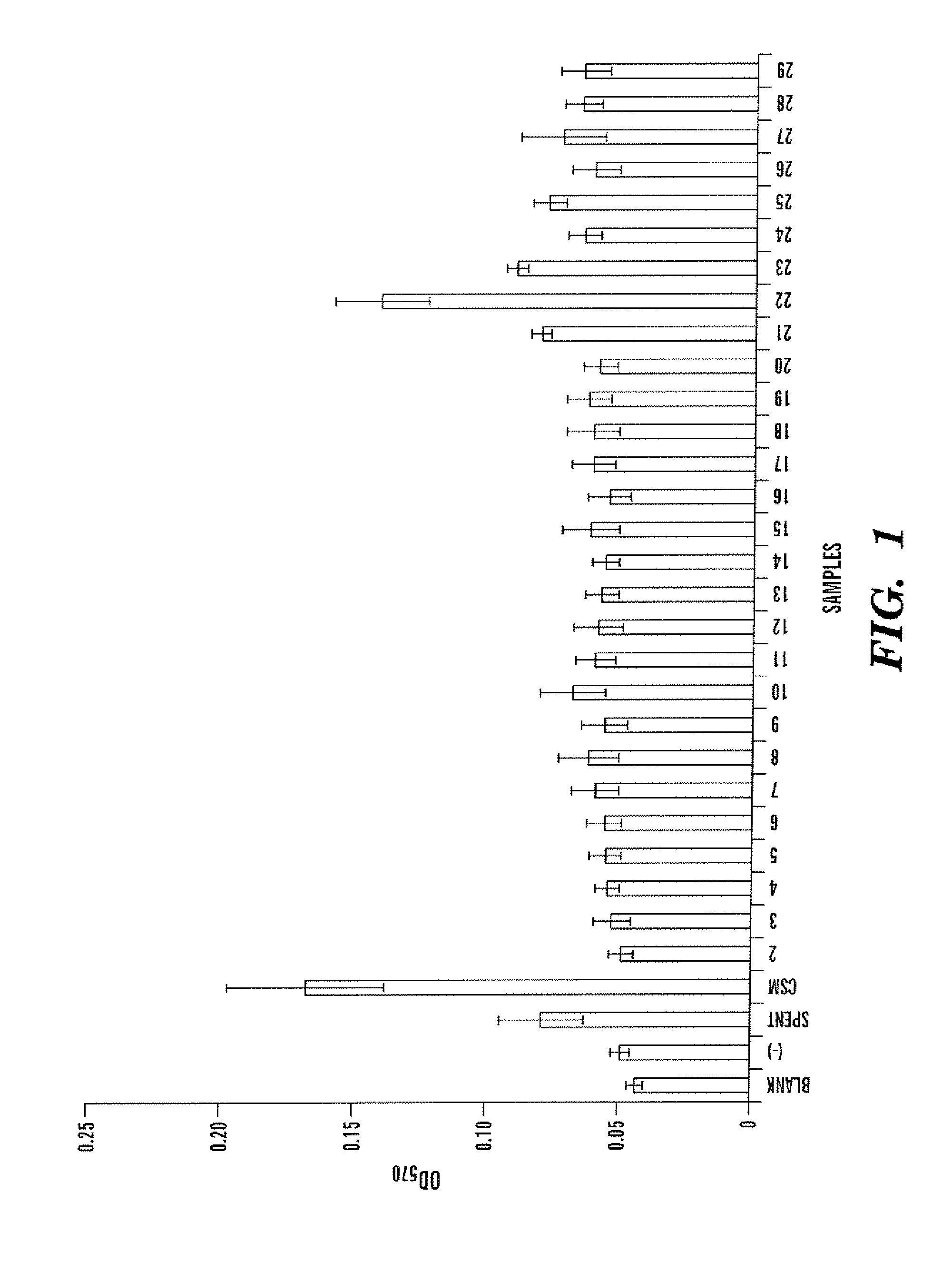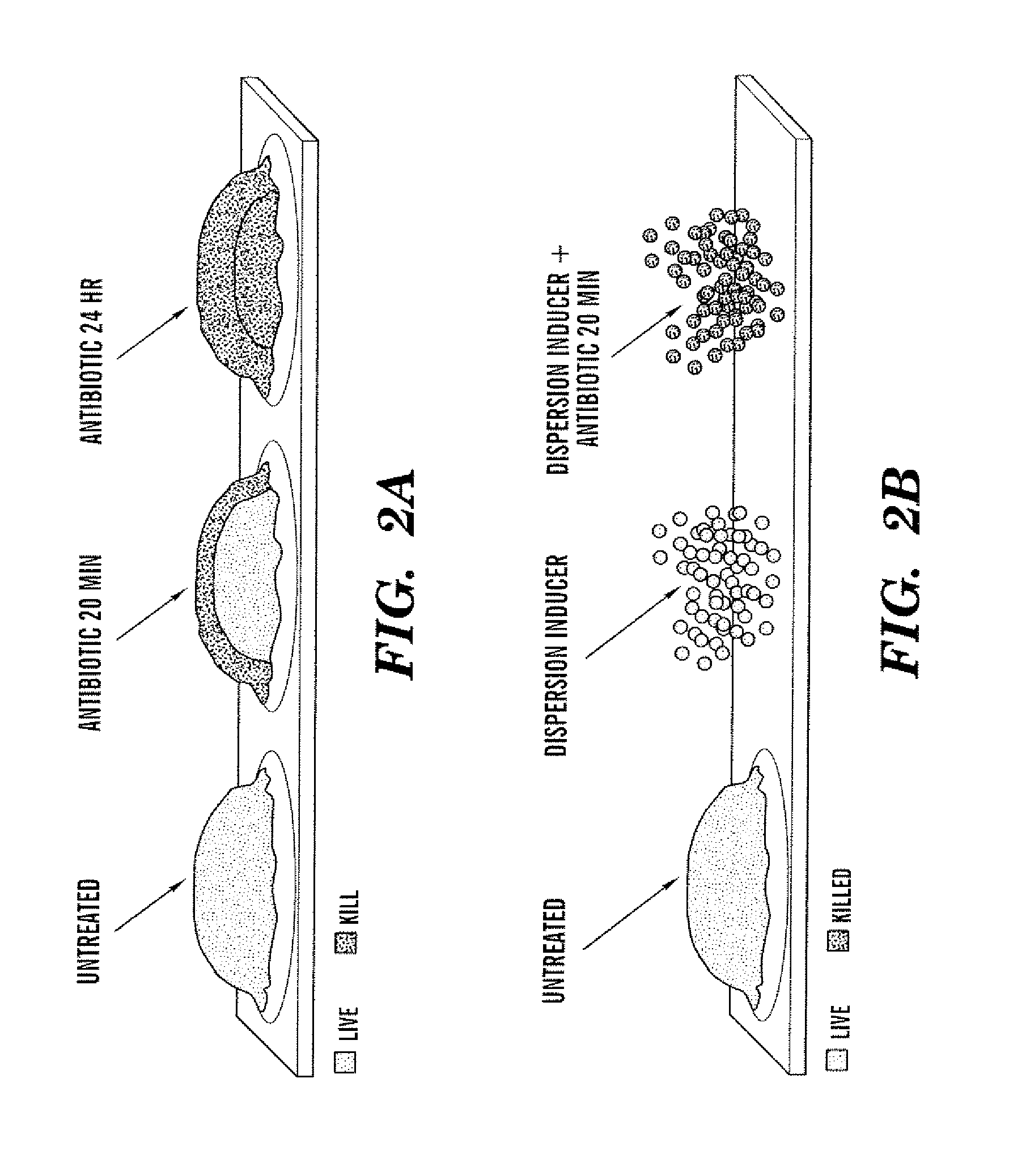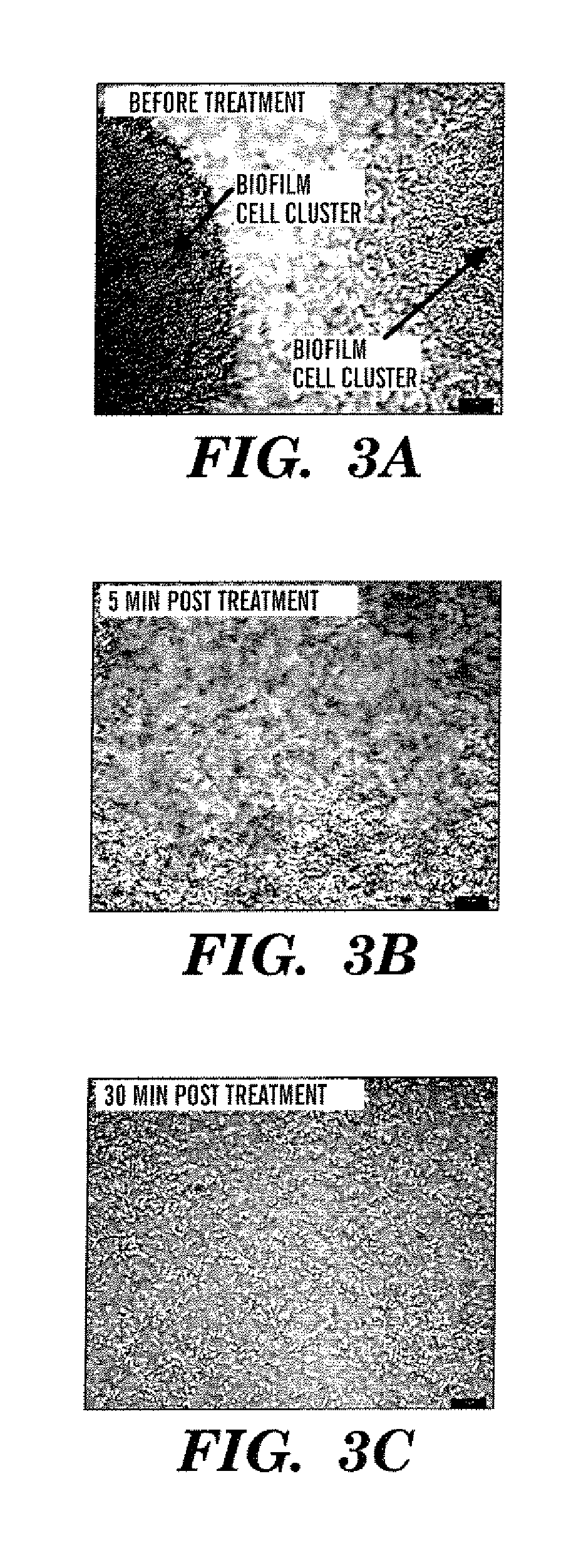Induction of a physiological dispersion response in bacterial cells in a biofilm
a biofilm and bacterial cell technology, applied in the field of induction of a physiological dispersion response in bacterial cells in a biofilm, can solve the problems of reduced physiological state of biofilm bacteria, inability of artificial chemical agents to adequately attack and destroy infectious biofilm populations, and protection conferred by biofilm matrix polymers
- Summary
- Abstract
- Description
- Claims
- Application Information
AI Technical Summary
Benefits of technology
Problems solved by technology
Method used
Image
Examples
example 1
for Extracting and Purifying Spent Medium
[0055]Pseudomonas aeruginosa were cultured in EPRI composed NH4NO3 (0.05 g / L), Na2SO4 (0.05 g / L), KH2PO4 (0.19 g / L), K2HPO4 (0.63 g / L), Hutner Salts (1 mL / L), and glucose (2.0 g / L). Four liters of EPRI were inoculated with 6 mL of an overnight culture of P. aeruginosa and incubated for 10 days at 30° C. with agitation. Bacterial cells were harvested by centrifugation (Sorvall RC 5B plus, GSA rotor, Dupont, Ashville, N.C.) at 27,500×g for 35 minutes at 4° C. Supernatant was filter-sterilized initially with a 0.45 μm filter unit followed by a Millex-GP 0.22 μm filter unit (Millipore, Billerica, Mass.). The organic components of spent medium were extracted with chloroform (1:3.125) using a rotavapor R-3000 (Biichi Laboratories, Flawil, Switzerland) and re-suspended in 6 mL of filtered nanopure water. The final 15 product was called Chloroform extracted Spent Medium (CSM).
[0056] CSM was fractionated by High Performance Liquid Chromatography (HPL...
example 2
acteria are Resistant to Antibiotics
[0060]FIG. 2A illustrates schematically how biofilm bacteria are resistant to the addition of antibiotics, with similar resistance shown for biocides and other antimicrobial treatments. FIG. 2B illustrates that if a dispersion inducer is added in addition to antibiotic, the dispersed bacteria lose their resistance and become susceptible to the antibiotic.
example 3
Dispersion Inducing Compounds
[0061]FIG. 3 shows an actual biofilm sample treated with the dispersion inducing compound according to the present invention, derived from cultures of Pseudomonas aeruginosa. In this experiment, a once-through flow-cell was used to culture P. aeruginosa over a period of six days prior to testing with added CSM.
[0062] The flow cell was constructed of anodized aluminum, containing a chamber 1.0 mm by 1.4 cm by 4.0 cm capped with a glass cover slip. Sterile EPRI medium was pumped from a 2-liter vessel through silicone tubing to the flow cell using a Masterflex 8-roller-head peristaltic pump at a flow rate of 0.13 ml min−1. Flow through the chamber was laminar, with a Reynolds number of 0.17, having a fluid residence time of 4.3 min. Medium leaving the flow cell was discharged to an effluent reservoir via silicone tubing. The entire system was closed to the outside environment but maintained in equilibrium with atmospheric pressure by a 0,2-μm-pore-size gas...
PUM
| Property | Measurement | Unit |
|---|---|---|
| diameter×10 | aaaaa | aaaaa |
| flow rate | aaaaa | aaaaa |
| flow rate | aaaaa | aaaaa |
Abstract
Description
Claims
Application Information
 Login to View More
Login to View More - R&D
- Intellectual Property
- Life Sciences
- Materials
- Tech Scout
- Unparalleled Data Quality
- Higher Quality Content
- 60% Fewer Hallucinations
Browse by: Latest US Patents, China's latest patents, Technical Efficacy Thesaurus, Application Domain, Technology Topic, Popular Technical Reports.
© 2025 PatSnap. All rights reserved.Legal|Privacy policy|Modern Slavery Act Transparency Statement|Sitemap|About US| Contact US: help@patsnap.com



